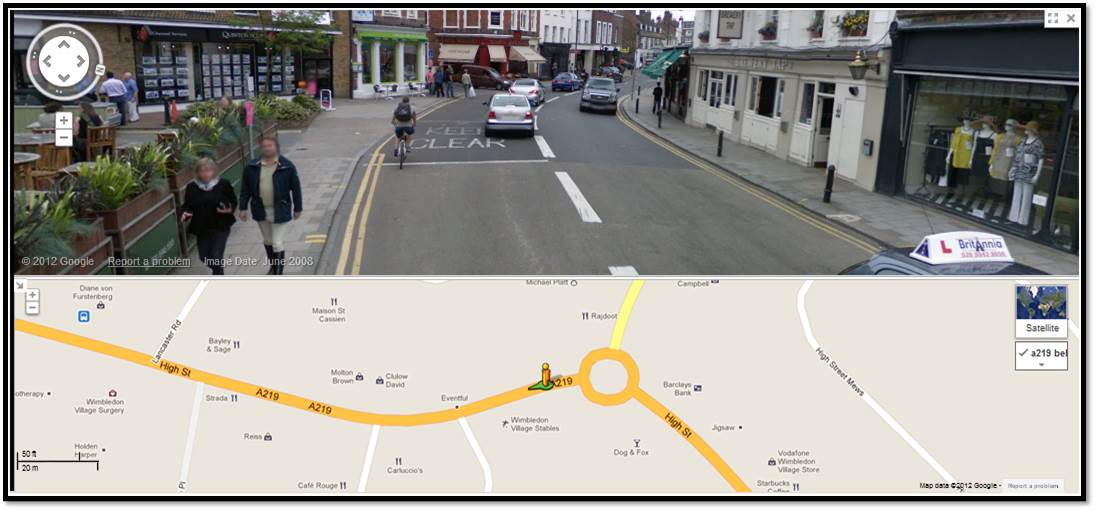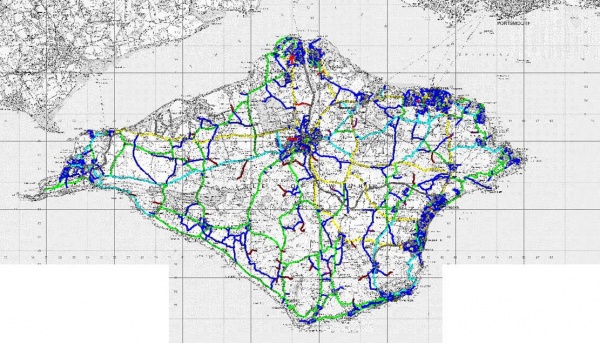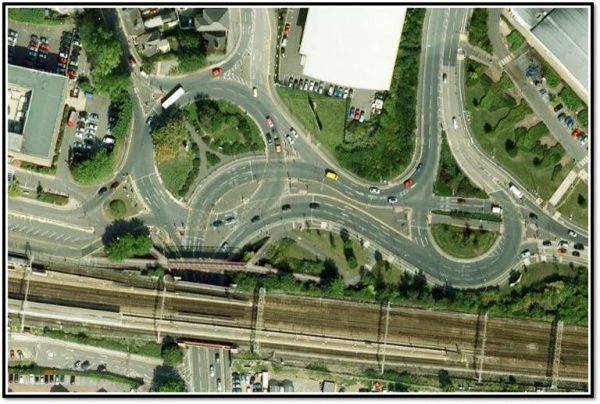Skid Resistance Strategy
The time when lack of knowledge of skid resistance could be used as a defence against claims for damages because of insufficient road surface friction has long gone. If an authority does not know the skid resistance, it cannot manage the safety of its network.
Any authority that has not set standards cannot say a particular level of skid resistance is safe. Without knowledge, and a clear policy based on acceptable standards, highway authorities remain liable and likely to have to accept liability, even when liability is not justified.
The W.D.M. Limited Consultancy team has extensive experience of implementing skid policies, tailored to the needs and resources available, to a range of highway networks, from small authorities and private ventures through to central government organisations.
Standards can be set either by benchmarking against similar networks, using national standards, or by evaluating accident records and skid resistance actually on the network. The Consultancy team has experience of applying all three approaches, throughout the UK and in Australia and New Zealand.
The experience covers both rural and large urban networks and in the latter the team has developed overarching policies that have been adopted by multiple authorities responsible for road and highway safety within a single urban area.
Procedures to produce lists of potential sites requiring treatment, tailored to available resources and the local policy, can be introduced and supported, either by training of local staff to carry out the site investigation, or provided as a service.
For authorities with policies in place, reviews of the effectiveness of the implementation of the policies can be undertaken to identify gaps in knowledge, methodology and understanding.
The feedback from these reviews provides guidance for continuous improvement and often significant opportunities for cost savings by establishing the effectiveness of material specifications used when designing road and pavement surfacing, where it is applied to solve a skid related defect.
Establishing Appropriate Investigatory Levels
A number of analyses have been carried out to determine the appropriate investigatory levels (IL) for local Highway Authorities. The accident rate is plotted against the wet accident rate to establish relationship skid resistance and wet skidding accident. The Figure below shows the combined results for three Highway authorities for bends with different radii on single carriageway roads. As shown for this event, the correlation between skid resistance and the wet accident rate is extremely good, with R2 values between 0.94 and 0.99, which provides a level of confidence in relating the accidents to skid resistance. The Figure also shows that the risk of wet accidents increases as the radius of the bend decreases.
Wet Accident Rate versus Skid Resistance for Bends on Single Carriageways

Deficiency listings
In implementing a Skid Resistance Strategy a large number of sites may be identified as below Investigatory level. The Department for Transport in its publication, Road Conditions in England 2010, suggests that 25% of the UK A road network is in need of investigation.
Many authorities want a method to prioritise sites for investigation based on SCRIM® deficiency and the occurrence of accidents. The WDM® Consultancy team has developed the concept of ‘deficiency listings’, which use a common approach to identify high priority sites with greater potential for reducing the number of crashes and thereby increasing road safety.
Utilising WDM® Software it is possible to develop site listings that identify priority sites for investigation where the potential benefits are greatest. Deficiency listings can use many factors to develop priorities including:
- SCRIM® deficiency
- Site category and Investigatory level
- Wet and dry crashes
- Crash severity
- Speed limit
- Traffic
Using these factors, sites can be ranked to provide a listing and plans for Engineers to use in planning investigations.
Deficiency plan
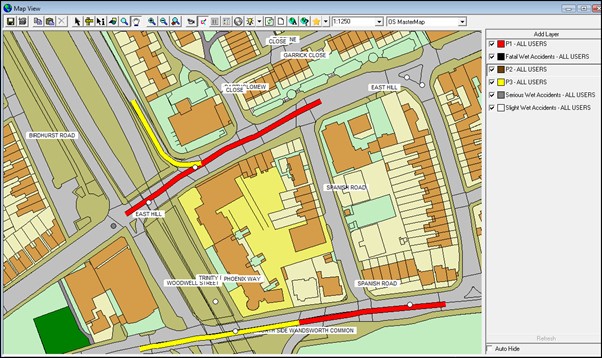
Sample deficiency listing (MS Excel)
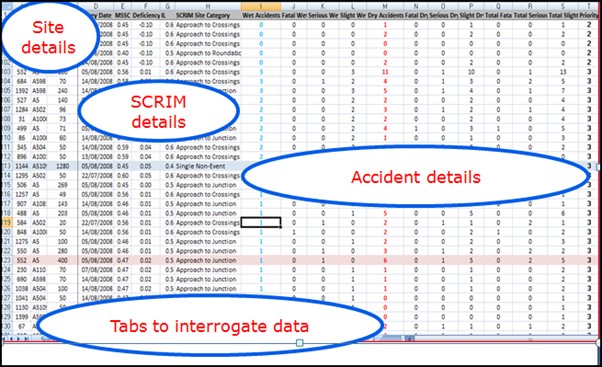
Site category
To implement a skidding resistance strategy relies upon a well-defined road network, with site categories correctly assigned. The Highways Agency standard HD28/15 defines typical site categories, and provides advice on determining site categories.
This process of setting the correct site categories is a fundamental part of implementing a skid resistance strategy. Once the initial site categories are established there should be an ongoing programme of review to ensure network changes are reflected in the site category.
WDM® has undertaken site category work for a number of authorities and developed ‘Site Category Editor’ to assist with the task, utilising OS mapping, network digitisation and SCANNER videos. The process uses Gradient and Curvature data collected by SCANNER to define the location of these features.
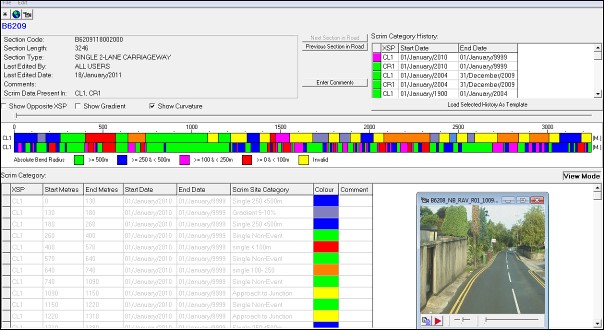
Site category editor showing curvature data
WDM® can undertake the full site category assignment for an authority, audit the existing designations, or provide training to authorities on how to undertake the task in an efficient manner.
To implement a Skid Policy, accurately defined site category is a fundamental requirement and is likely to be subject to investigation in the case of any skidding claims.
* SCRIM is the registered trade mark of WDM®





